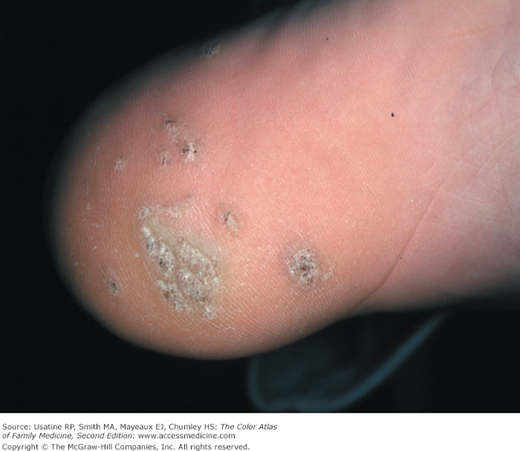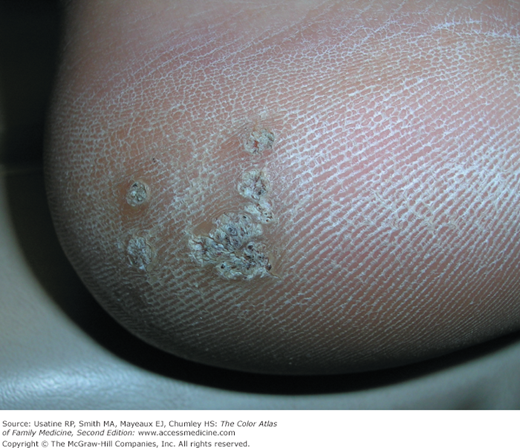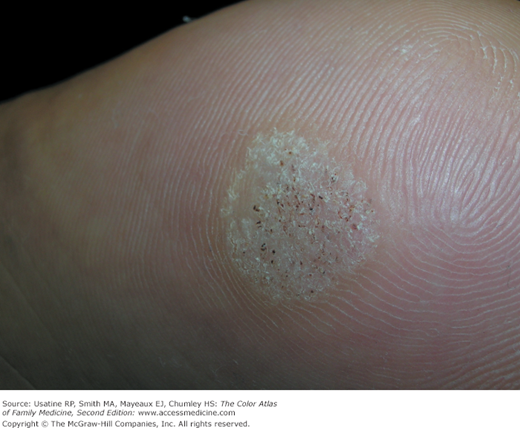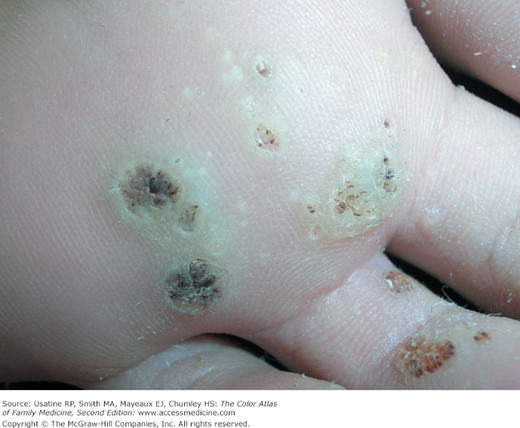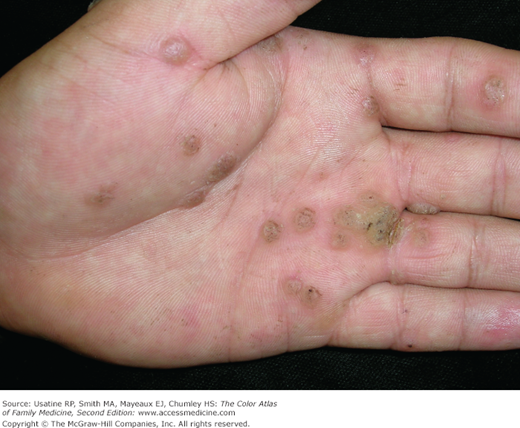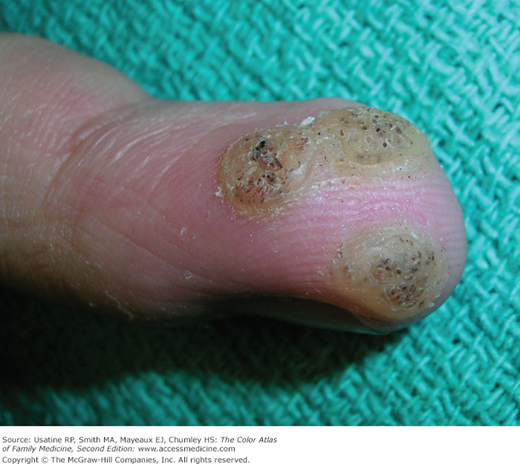Patient Story
A 15-year-old boy presents with painful growths on his right heel for approximately 6 months (Figure 134-1). It is painful to walk on and he would like it treated. He was diagnosed with multiple large plantar warts called mosaic warts. The lesions were treated with gentle paring with a #15 blade scalpel and liquid nitrogen therapy over a number of sessions. He and his mom were instructed on how to use salicylic acid plasters on the remaining warts.
Introduction
Plantar warts (verruca plantaris) are human papilloma virus (HPV) lesions that occur on the soles of the feet (Figures 134-1, 134-2, 134-3, 134-4, and 134-5) and palms of the hands (Figure 134-6).
Epidemiology
Etiology and Pathophysiology
- Plantar warts are caused by HPV.
- They usually occur at points of maximum pressure, such as on the heels (Figures 134-1, 134-2, 134-3, and 134-4) or over the heads of the metatarsal bones (Figure 134-5), but may appear anywhere on the plantar surface including the tips of the fingers (Figure 134-7).
- A thick, painful callus forms in response to the pressure that is induced as the size of the lesion increases. Even a minor wart can cause a lot of pain.
- A cluster of many warts that appear to fuse is referred to as a mosaic wart (Figures 134-1 and 134-4).
Stay updated, free articles. Join our Telegram channel

Full access? Get Clinical Tree


